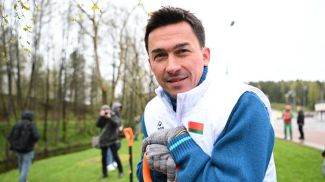GENEVA, 30 Aug. (BelTA - Xinhua) - For the first time Swiss scientists and partners have designed a three-stepped recipe for regenerating electro-physiologically active nerve fibers across complete spinal cord lesions in rodents, the Swiss Federal Institute of Technology Lausanne (EPFL) said in a press release on Wednesday.
The adult mammalian body has an incredible ability to heal itself in response to injury. Yet, injuries to the spinal cord lead to devastating conditions, since severed nerve fibers fail to regenerate in the central nervous system. Consequently, the brain's electrical commands about body movement no longer reach the muscles, leading to complete and permanent paralysis.
Scientists from EPFL and University of California at Los Angeles have now understood the underlying biological mechanisms for severed nerve fibers to regenerate across complete spinal cord injury, bridging that gap in mice and rats for the first time.
The recipe targets three components for nerve fiber growth to occur: reactivate the genetic program for axons to grow; establish a permissive environment for the axons to grow in; and a chemical slope that marks the path along which axons are encouraged to regrow. Without one or the other, the recipe simply does not succeed in regenerating new axons in the spinal cord.
By analogy, if nerve fibers were trees, then the terminal branches of the axons can be viewed as the tree's branches. If the main branches of the tree are cut, little branches may sprout spontaneously along the remaining trunk of the tree, but the cut branches do not grow back.
The same is true for neurons in adults. New branches of severed axons can sprout and make connections above an injury, but the severed part of the axon does not regrow. The three-pronged recipe uncovered changes that, making it possible to regenerate entire axons.
Though the new axons are able to transmit electricity and thus neural signals across the lesion, the regained connectivity is not enough to restore walking. The rodents remained paralyzed, as anticipated by the scientists, since new circuits are not expected to be functional without the support of rehabilitation strategies.
For the rodents to walk again, researchers said further investigation is needed on how the axons make the appropriate connections with locomotor circuits below the injury, which may entail rehabilitation with electrical stimulation to integrate, tune and functionalize the new axons.
That's why any applications in humans is still premature for now, the researchers said, as more research must be done for the recipe to be clinically translatable.











